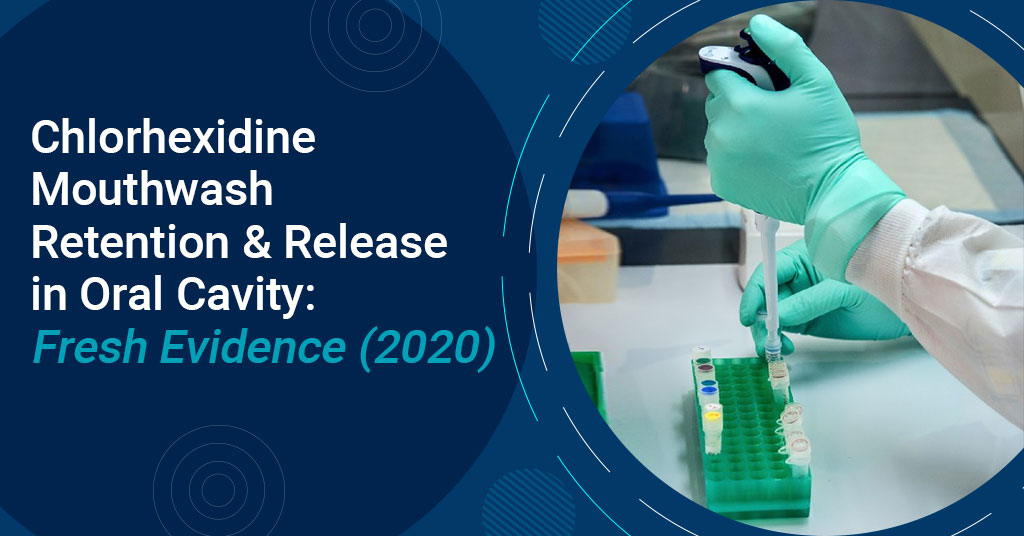Menu

In our recent article, we spoke about protecting healthcare professionals from the SARS-CoV-2 virus by making use of mouthwashes that support persistent attachment and sustained release (substantivity) in the oral region. This can help minimize viral load in the saliva and keep it low for a long duration of time.
It’s mainly during these safe periods of less viral load, the likelihood of droplet spread is reduced, and doctors can safely conduct appointments.
In this article, we present you with the evidence of Chlorhexidine (CHX) retention inside the mouth and its quality of exhibiting substantivity.
What Do We Know So Far?
CHX can easily absorb to the oral region, including:
This feature of CHX highlights its potential to remain within the oral region. It also points to its persistent bacteriostatic property (high substantivity), which can last for almost 24 hours.
What Was Missing Until Now?
Up until now, we could only assume that CHX could be absorbed and retained on the dental pellicle in vivo and mucosal surfaces. However, we lacked compelling evidence on the same.
Recent Study Investigation
A recent study investigated the retention of CHX in various oral tests for over 24 hours. The study was conducted using Matrix-Assisted Laser Desorption/Ionization-Time Of Flight (MALDI-TOF) mass spectrometry.
Why the MALDI-TOF Mass Spectrometry Was Used?
MALDI-TOF mass spectrometry is a potent tool when it comes to the pharmacokinetic analyses of various oral medications in the industrial and scientific fields. This powerful technique can provide answers about the availability, substantivity, and frequency of application required.
Study Findings:
1) Large amounts of CHX was present in the oral cavity for a long duration after 30 seconds of rinsing.
2) CHX was retained in the oral cavity for almost 11 hours at mcg/ml levels after rinsing. It was also detected 24 hours after the application.
3) Salivary CHX concentration was present for 6 hours at mcg/ml levels after rinsing.
4) There was a decline of intraoral CHX levels within the first 6 hours of rinsing. It was later retained at reduced concentrations for no less than 24 hours.
Conclusion:
1) The current study confirms that oral mucosa and dental pellicle represent the primary reservoirs of CHX after its application.
2) CHX advances from these reservoirs to the saliva in reduced concentrations.
Source:


| PRODUCTS | QTY | PRICE | VALUE in INR |
|---|
| PRODUCTS | QTY | PRICE | VALUE in INR |
|---|